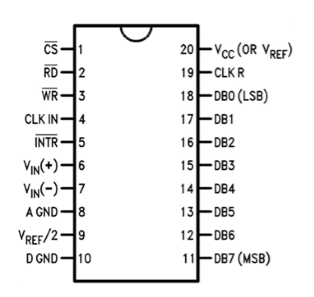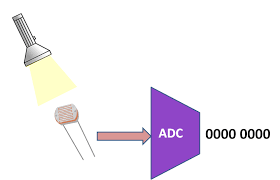Pin Description

5. INTR, Interrupt: This is an active low output pin. This pin goes low when the conversion is over.
/* Name : main.c
* Purpose : Source code for ADC0804 Interfacing with AT89C52.
* Author : Gemicates
* Date : 2014-02-15
* Website : www.gemicates.org
* Revision : None
*/
//Program to check the working of ADC0804 using LED's on its output port.
#include <REGX52.H>
#define input P2 // Input port to read the values of ADC
#define output P0 // Output port, connected to LED's.
sbit wr= P1^1; // Write pin. It is used to start the conversion.
sbit rd= P1^0; // Read pin. It is used to extract the data from internal register to the output pins of ADC.
sbit intr= P1^2; // Interrupt pin. This is used to indicate the end of conversion. It goes low when conversion is complete.
void delay(unsigned int msec ) // The delay function provides delay in msec.
{
int i,j ;
for(i=0;i<msec;i++)
for(j=0;j<1275; j++);
}
void adc() // Function to read the values from ADC and display on the LED's.
{
rd=1;
wr=0;
delay(1);
wr=1;
while(intr==1);
rd=0;
output=input;
delay(1);
intr=1;
}
void main()
{
input=0xff; // Declare port 0 as input port.
while(1)
{
adc();
}
}


